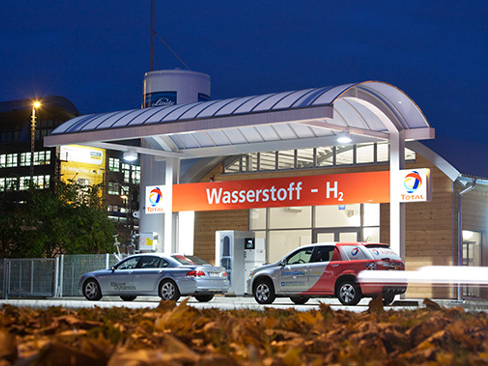Infrastructure for hydrogen-based mobility
The oversupply of electricity from renewables in Germany 2014 led to an amount of 1581 gigawatt hours (annual electricity production of about 320 modern wind turbines) that could not been fed into the electric grid. In the context of a further extension of renewable electricity production units, the use of this excess electricity for hydrogen production, for example for the mobility sector, is discussed.
The infrastructure needed to produce and refuel hydrogen to fuel cell vehicles was examined in the frame of a research project concerning the hydrogen activities of Total Deutschland. Besides the technical reliability, the research focused on the ecologic performance and the costs of hydrogen supply systems. Primary data for analysis were raised from several hydrogen production plants as well as refueling stations.
The published results in Applied Energy show the environmental impact of hydrogen mobility by the example of a hydrogen refueling station including an on-site water electrolyzer being operated in Berlin. Regarding the plants operation, the provision of excess electricity from wind turbines is assumed.
Compared to conventional fuels, results show up to 90% reduction of greenhouse gas (GHG) emissions per driven kilometer. 1.9 kilogram CO2 arises for the production of 1 kg H2. The investigations show however notably higher GHG emissions as compared to similar studies on older systems. These higher emissions are led back to higher energetic efforts being related to the build-up of the considered plants and facilities.
The results also indicate that a general assumption of major mobility studies (to neglect emissions arising from the plants construction) is not adequate to properly estimate emissions from the considered mobility pathway and the general conditions in the case under consideration.
Following the scientists results, several actions like a higher plant workload, a lower consumption of supplies, a smaller hydrogen storage capacity and the temporal decoupling of electrolyzer and compressor operation can further reduce specific emissions. These aspects are subject of upcoming investigations at ITAS. (05.09.2016)
Further links:


